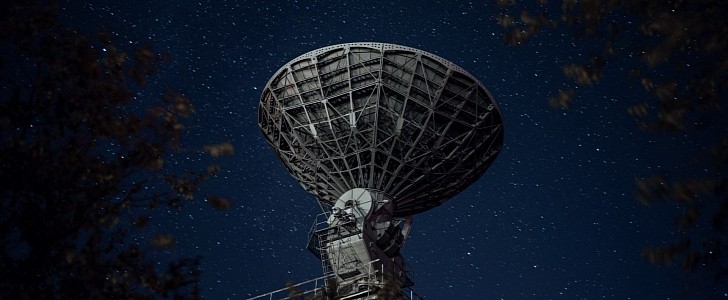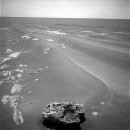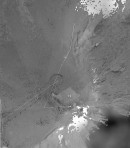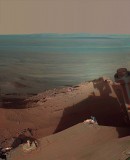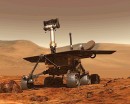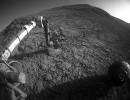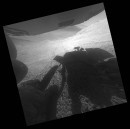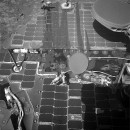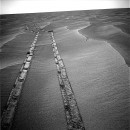Back in 2019, astronomers detected a signal that appeared to be beamed toward Earth from Proxima Centauri. The latter is the nearest star system to our sun, it is approximately 4.2 light-years away, and it is believed to be a habitable planet.
The signal itself was a radio wave on the 982 MHz band, which is not used that often by satellites or aircraft. With that in mind, scientists believed that this could be a sign of alien technology.
Unfortunately for everyone involved, the signal only lasted for about five hours, and then it never reappeared during scans of Proxima Centauri.
The astronomers decided to name the signal "BLC1", and it was the only one out of four million signals from the vicinity of Proxima Centauri that was found to be unusual during the 26-hour-long survey of that star system.
As experts on the matter explained, the signal caught their attention because it had a peculiar wavelength and a lengthy duration, which raised eyebrows across the team at the Parkes Murriyang telescope in Australia.
Researchers are surveying Proxima Centauri as part of an alien-hunting program called Breakthrough Listen, which is still ongoing, and it uses telescopes across the world to “listen” for potential signs of extraterrestrial life in radio transmission form.
Since BLC1 was “heard” by scientists, they decided to take a closer look at their first (and only) recording of the entire thing. Since they did not get to hear it again, they might as well take a closer look. Here is the part where it gets disappointing if you were expecting to learn about aliens.
According to researchers, the automated sorting program that they rely on to filter these radio signals had let "BLC1" slip through, even though other signals like it (but on different frequencies) were overlooked.
As Sofia Sheikh, an astronomer at the University of California, in Berkeley, noted in both her papers, the signal was just human-made radio interference. The two studies were published in the Nature Astronomy journal, and the scientist explained it all for Nature.com.
Scientists will attempt to discover the nature of the interference, but they presume it comes from human-designed electronics, such as computers or mobile phones.
Astronomers believe that the appearance of the signal within the same timeframe as their “listening” activity is a coincidence and the strange nature of the signal could be explained by the fact that the device was going through a repair or a malfunction.
So, if you live in Australia and were fixing or modifying your amateur radio equipment (like that cheap knock-off station you got from China) on April 29, 2019, this is a suitable time to let them know what you were doing. This way, they can get back to their research without having to look for a needle in a haystack.
Unfortunately for everyone involved, the signal only lasted for about five hours, and then it never reappeared during scans of Proxima Centauri.
The astronomers decided to name the signal "BLC1", and it was the only one out of four million signals from the vicinity of Proxima Centauri that was found to be unusual during the 26-hour-long survey of that star system.
As experts on the matter explained, the signal caught their attention because it had a peculiar wavelength and a lengthy duration, which raised eyebrows across the team at the Parkes Murriyang telescope in Australia.
Researchers are surveying Proxima Centauri as part of an alien-hunting program called Breakthrough Listen, which is still ongoing, and it uses telescopes across the world to “listen” for potential signs of extraterrestrial life in radio transmission form.
Since BLC1 was “heard” by scientists, they decided to take a closer look at their first (and only) recording of the entire thing. Since they did not get to hear it again, they might as well take a closer look. Here is the part where it gets disappointing if you were expecting to learn about aliens.
According to researchers, the automated sorting program that they rely on to filter these radio signals had let "BLC1" slip through, even though other signals like it (but on different frequencies) were overlooked.
As Sofia Sheikh, an astronomer at the University of California, in Berkeley, noted in both her papers, the signal was just human-made radio interference. The two studies were published in the Nature Astronomy journal, and the scientist explained it all for Nature.com.
Scientists will attempt to discover the nature of the interference, but they presume it comes from human-designed electronics, such as computers or mobile phones.
Astronomers believe that the appearance of the signal within the same timeframe as their “listening” activity is a coincidence and the strange nature of the signal could be explained by the fact that the device was going through a repair or a malfunction.
So, if you live in Australia and were fixing or modifying your amateur radio equipment (like that cheap knock-off station you got from China) on April 29, 2019, this is a suitable time to let them know what you were doing. This way, they can get back to their research without having to look for a needle in a haystack.
